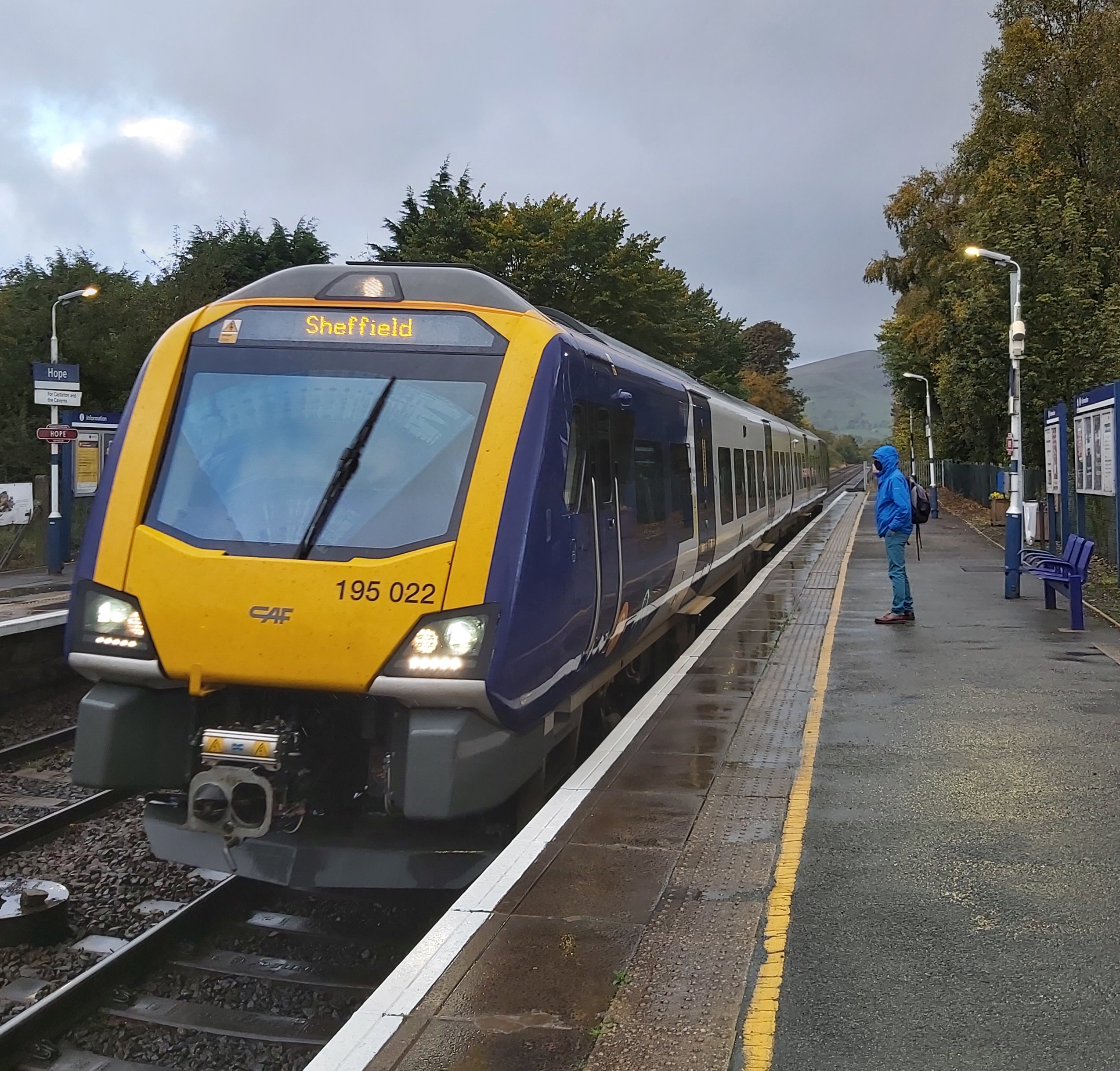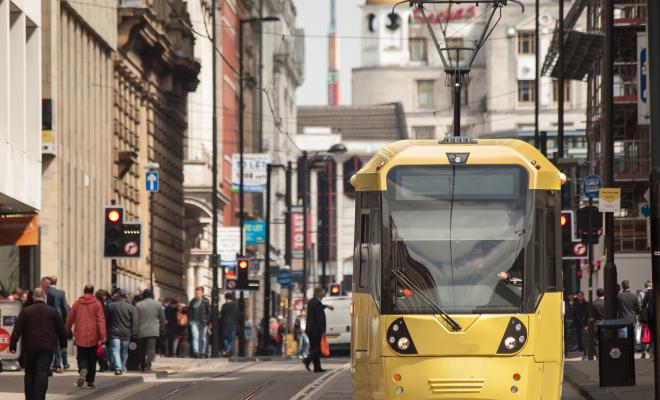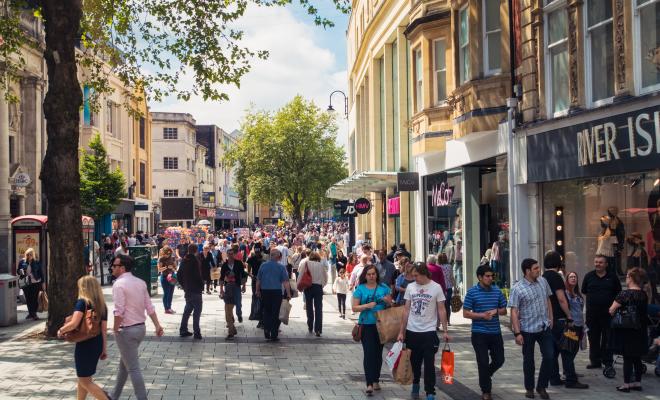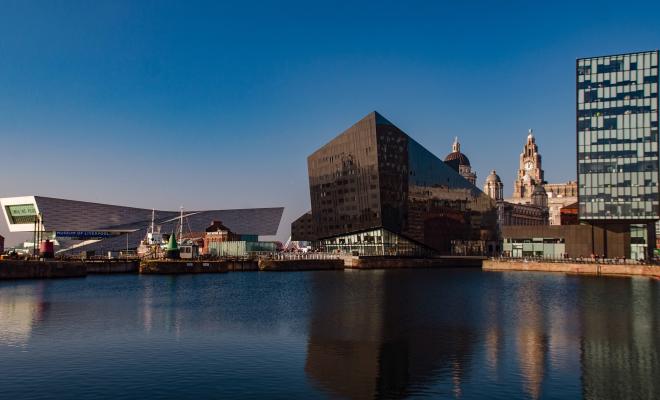20 Sep 2024
How is Action 21 tackling the climate crisis?
Tackling carbon emissions from transport can be challenging in rural areas like Hope Valley in the Peak District. Public transport provision tends to be more limited than in urban areas, and safe walking and cycling routes can be a challenge when people have to travel longer distances to access key services.
In the Hope Valley, a key factor in tackling transport emissions and improving travel options for residents has been a partnership between the community group Hope Valley Climate Action (HVCA) and Derbyshire County Council, Derbyshire Dales District Council, High Peak Borough Council and the Peak District National Park Authority. HVCA has been the catalyst but needs the support of these local authorities to design and deliver a range of climate action projects aimed at tackling rural transport emissions, known as the “Travelling Light” programme.
The community group was initially set up to tackle transport, energy and land-based emissions in the area, with the aim to raise awareness of key climate issues while also demonstrating activity through local projects to advocate for policy change. The Travelling Light programme is intended to become a beacon for sustainable travel in rural areas.
Its ambitions are to:
- increase overall walking and cycling levels, particularly among those travelling to school or work, and increase access to employment for those without cars.
- increase overall levels of public transport use.
- accelerate the switch to electric vehicles.
- increase access to the outdoors for diverse and low-income populations.
- increase the level of car-free visits to the local area.
A steering group has been set up with Derbyshire County Council and the Peak District National Park Authority to guide the delivery phase of this programme.
“The project aims to improve everyday transport for local people alongside boosting vital access to the outdoors for residents of surrounding urban areas. The Hope Valley is within an hour’s drive of 16 million people, principally in Manchester and Sheffield. However, one-third of residents in Sheffield do not have access to a car and Manchester has amongst the lowest car ownership levels in the country. The Hope Valley currently receives between 3 and 5 million visitors per year, making it one of the most popular rural destinations in the UK. An estimated 90% of these journeys are made by car."
Roger Clarke, HVCA’s travel and transport co-ordinator.
Storytelling is also a key component of Travelling Light to demonstrate the benefits of alternative methods of transport and to inspire long-term behaviour change. HVCA is currently developing a series of video logs (vlogs) featuring local people using alternatives to private cars. It’s also promoting bus use through stories on its website as part of its “Use the Bus” campaign, run in partnership with local bus operators and councils.
Making active travel more attractive
HVCA is working hard to make active travel (walking and cycling) more appealing in rural areas. Initial steps include:
- the creation of a cohesive map of residential areas and back roads in and around the Hope Valley, showcasing roads with lower speed limits that allow for safer modes of active travel.
- working with local authority officers to build awareness in the community of the benefits that lower speed limits can bring.
- planning a “Good for you, good for the planet” campaign to promote walking among all ages and abilities, as well as a “Walk to school” campaign in partnership with local primary schools.
Furthermore, the group has also run “Cycling for all” events, with one session including 60 cyclists who went on a cycling rally together and then shared their views on what improvements to local roads would make cycling safer and more accessible to them. These local responses were voted on and fed directly into HVCA’s planning and campaigning to boost active travel uptake.
Tackling private car use
HVCA is encouraging residents to reimagine car ownership. So far, this has included the delivery of information sessions about peer-to-peer car sharing (where car owners rent their vehicle to others), using existing platforms such as HiyaCar – an app available across the UK that enables people to hire cars directly from others in their neighbourhood.
Encouraging electric vehicles
In recognition that some people will continue to drive, HVCA is promoting the switch to electric vehicles by delivering “living with an electric vehicle” events. These bring together potential electric vehicle owners and existing owners, allowing questions and concerns to be answered in a relaxed manner. To ensure that the switch to electric vehicles doesn’t deprioritise reducing private car use and increasing active travel, HVCA is also running Q&A sessions on electric vehicle car-sharing options.
Derbyshire County Council is committed to improving the area’s electric vehicle infrastructure. The council worked with HVCA on a successful bid to Midlands Connect for funds to develop and promote a new platform for vehicle sharing and charge points. Hope Valley will be a pilot area for the council’s electric vehicle implementation strategy.
What impact has the project had?
Active travel
- “Walk to school” projects have engaged pupils and staff across 8 Hope Valley primary schools and have led to an increase in active travel, with nearly 60% of year 5 and 6 pupils walking or cycling to school.
- “Try an e-bike” events in 5 villages have increased awareness and confidence in e-bike use for everyday journeys, with 80% of attendees now more likely to purchase an e-bike than before.
Public transport
- The “Use the Bus” campaign has resulted in raised awareness of bus services, with constructive feedback from over 50 local people on areas for improvement to local services to boost participation in the long term.
- In response to the promotion of Hope Valley train stations as “mobility hubs”, Hope station has been identified as a priority hub. Conversations are ongoing with local parish councils and other local organisations on how the hub would work in practice. Aims include having high-speed connections to Sheffield and Manchester stop at Hope, as well as improved links with bus services and better facilities for cyclists.
- Engagement and campaigning with local groups and train operators has resulted in local rail services calling at every station, every hour in the Valley, with Northern Rail’s provisional timetable from December 2022 including this level of service for the first time (previously not all stations had an hourly service).
What made this work?
Discuss feasibility with local authorities and other key stakeholders
HVCA carried out a 9-month development feasibility process, a key part of which was a project officer working with stakeholders – including local authorities, transport organisations, MPs and tourism boards – to identify barriers and opportunities and to co-create projects to address these for the Travelling Light programme. This process has been essential in gaining initial buy-in from local stakeholders.
Sell a vision for the area
It’s important to set out an overall vision for the local area and make the case for how tackling rural transport emissions can transform it for the better. Hope Valley has a strong identity, and HVCA’s comprehensive approach to addressing this issue on a large scale grabbed people’s imaginations and got them excited about how potential changes would improve the area – an important step in building local support for the programme.
"We’re committed to helping Derbyshire to become a net zero county by 2050 or sooner, but we can’t do it alone. We need communities to play their part – and this is exactly the kind of initiative that we’re proud to support. As well helping to cut carbon emissions in Derbyshire, it will help move us towards achieving our ambition of becoming the most connected county in the country for cycling and make greener travel a real option for residents and visitors alike, not just in Hope Valley but across the whole of Derbyshire."
Barry Lewis, Leader of Derbyshire County Council.
Bring local transport operators on board straightaway
It’s essential to engage with local transport operators and bring them on board right from the beginning, before targets and deliverables are set, as they’ll be able to advise on proposed plans. Their input will also bolster calls to make public transport changes – bringing local operators on board from the outset has allowed HVCA to create better political traction locally, both with councils and local MPs.
Listen and learn from others
HVCA and the local authority-led steering group learnt from the outcomes of other rural programmes that tackle transport emissions, including by the Lake District National Park Authority and the Snowdonia National Park Authority. Both authorities had previous success in implementing rural road closures to prioritise active travel, and so HVCA and Derbyshire County Council were keen to learn from them to understand the challenges that arose in the process.
What resources were needed?
The estimated cost of the first year of HVCA’s Travelling Light programme is £120,000. This budget includes resourcing for 2 full-time members of staff, supported by a team of volunteers that provide approximately 4,000 hours of support (equivalent to 2 further full-time positions), with volunteers having a specific focus on community engagement. The initial scoping and development phases of the Travelling Light programme involved 5,000 hours of volunteer time.
The project received £120,000 from the Department for Transport, in addition to a £15,000 grant from the Foundation of Integrated Transport and £1,000 from the Peak District National Park Authority to support the development stage of the project.
"The Travelling Light Project is fantastic, and I am so pleased the government money will be given to help make the Hope Valley a brilliant example of sustainable rural travel. The Hope Valley is a very special place and this will have a positive impact on those that live, work and visit there."
Sarah Dines, Derbyshire Dales MP.
Moving forward, the project is looking to generate additional resources to support delivery, making bids to foundations to support infrastructure projects. A partnership in which a community group works closely with local councils and public transport operators creates a strong base for raising funds for further transport investment.
Lessons from Hope Valley
Be prepared for opposition, particularly around private car use
When tackling private car use, it’s important for community groups and local authorities to be prepared for opposition. A pragmatic approach is important for shifting the focus onto the wide-reaching benefits that transport changes bring, rather than getting bogged down in public debate over private car restraints. For example, HVCA set some intermediate deliverables for the programme that were less controversial but still offered immediate benefits, such as active travel media campaigns. This kind of approach demonstrates to residents and stakeholders that immediate, positive benefits can be achieved, while also building momentum around the broader campaign.
Look for existing climate champions among stakeholders
An important step is local stakeholder mapping, identifying the existing environmental concerns and priorities within the community and using these in campaigns to demonstrate the benefits that change can bring. An example would be adding the voices of Parent Teacher Associations that are concerned about traffic and a lack of safe pavements and cycle lanes for walking and cycling to school.
Rural transport policies require collaboration between multiple councils
Improving rural transport policies, particularly public transport networks that encompass multiple local authority areas, can potentially create practical difficulties as neighbouring local authorities will need to collaborate and be on the same page. To counter this, early engagement with all local authorities involved is essential. Also consider setting up a steering group through which multiple local authorities can collaborate and input into design and delivery.
Get broader political support from local MPs
HVCA also engaged with 2 local MPs, working hard to bring them on board and create a strong political backing for the project. Both MPs featured in the re-opening of a public railway line that’s been brought back into use, as a symbol of collaboration to tackle rural pollution.
Useful information
Local action
HVCA has shared some tips for others looking to set up similar community programmes:
- Be clear about your objectives, and stick to them. In HVCA's case, the objective was to decarbonise the main sources of CO2 emissions in the Hope Valley by 2030.
- Develop a theory of change (a strategy for success) – in HVCA’s case, this was awareness, action and advocacy.
- Work constructively with people from all backgrounds, including those with whom you might disagree, and look for common ground.
- Be ambitious and provide clear leadership and organisation. Always aim to get more people involved. Build a team with varied skills and experience.
- Build positive links at a political and official level with local and central government.
- Recognise that it's a long haul and enjoy each other's contributions and company.
- Learn from things if they don’t go to plan, adapt/modify and re-group – never give up!
Friends of the Earth's view
It’s great to see action that was initiated by a local action group being supported by local authorities and transport operators in the area. This should act as inspiration to other community groups campaigning on transport. What’s more, shifting to more climate-friendly and healthier ways of getting around are perceived to be tougher in rural areas, so there are a lot of valuable lessons from Hope Valley for councils and campaigners alike.
While some impacts are evident already, others will take longer to be realised, and ongoing support from the local authorities will be vital. More government funding to local authorities for active travel and more powers to raise money locally for public transport would help initiatives like Hope Valley’s Travelling Light programme to be scaled up and replicated.
Friends of the Earth is showcasing specific examples of good practice in tackling climate change, but that doesn’t mean we endorse everything that a council is doing.
This case study was produced by Ashden and Friends of the Earth. It was originally published in January 2023. Any references to national policy in this case study relate to policy under the previous government and reflect the policy context in which the council was operating at the time.







